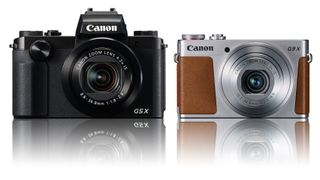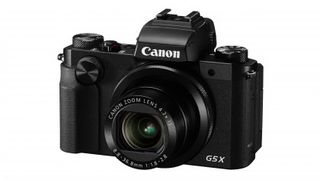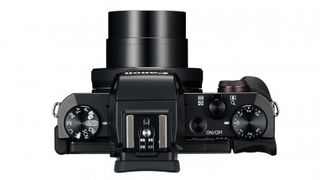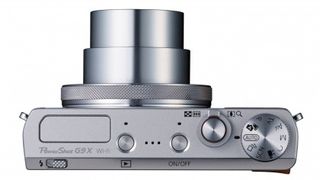Canon's two new PowerShots attack the high end compact market
The G5 X and G9 X extend and strengthen Canon's range of big-sensor high end compact cameras

Canon was once the go-to brand for high-end compact cameras which delivered DSLR controls and features in a pocket-sized body. But in recent years, Panasonic, Sony and Fuji have been stealing the limelight with big-sensor compacts like the LX100 and RX100 IV. But now Canon's big-hitting PowerShot range is back, and with two cameras not one – the G5 X and the G9 X.
Sensor size is the key. Old high-end compact cameras, PowerShots included, used 1/1.7-inch sensors not a whole lot larger than the 1/2.3-inch sensors used in point-and-shoot compact cameras. But a new generation of much larger 1-inch sensors (twice the size of 1/1.7-inch sensors) have helped narrow the gap to DSLRs for image quality but still allow compact camera designs.
Canon already has three big-sensor PowerShots – the compact PowerShot G7 X and the bulkier and more powerful G3 X bridge camera have the same 1-inch sensor as the new models, and there is another older PowerShot with an even larger 1.5-inch sensor – the G1 X II – but Canon has shown no sign of re-using that sensor in another camera.
(The PowerShot G16, S120 and S200 are older-generation cameras with the smaller 1/1.7-inch sensor.)
Canon PowerShot G5 X
The G5 X is the most radical design, incorporating a DSLR-style 'pentaprism' on the top – though this is actually just a housing for an electronic viewfinder. This is an important feature for a high-end compact camera – there are many occasions when a viewfinder is useful, such as when the light is too bright to be able to make out the rear screen properly.


The G5 X is designed for knowledgeable enthusiasts who like external controls – it has a mode dial and EV compensation dial on the top plate, a 24-100mm equivalent f/1.8-2.8 lens and a fully-articulating rear screen.
It has the same 1-inch 20-megapixel sensor used in the G9 X, G7 X and G3 X. All this power and performance doesn't come cheap, though. With a launch price of £629.99/US$799.99 (about AU$1,310), the G5 X will cost as much as a rather good DSLR or compact system camera.
Get daily insight, inspiration and deals in your inbox
Get the hottest deals available in your inbox plus news, reviews, opinion, analysis and more from the TechRadar team.
Canon PowerShot G9 X
The G9 X shares the same 1-inch 20-megapixel sensor as the G5 X but in a much smaller body with no viewfinder and a fixed rear screen. It's designed for small size and simplicity rather than outright power, and in fact its size is its most spectacular feature. Despite the much larger sensor, the G9 X is actually no larger than Canon's old PowerShot S120 – a camera with a much smaller 1/1.7-inch sensor and itself considered amazingly small in its day.


The small body means some compromises, of course, and where the G5 X has a wide-aperture 4.2x zoom lens, the G9 X has a smaller 28-84mm equivalent f/2-4.9 lens. Its 3x zoom range is still perfectly adequate, but while it has a wide f/2 maximum aperture at its shortest focal length, this shrinks to f/4.9 at full zoom. The PowerShot G9 X will sell for £399.99/US$529.99 (about AU$830).
Read:
